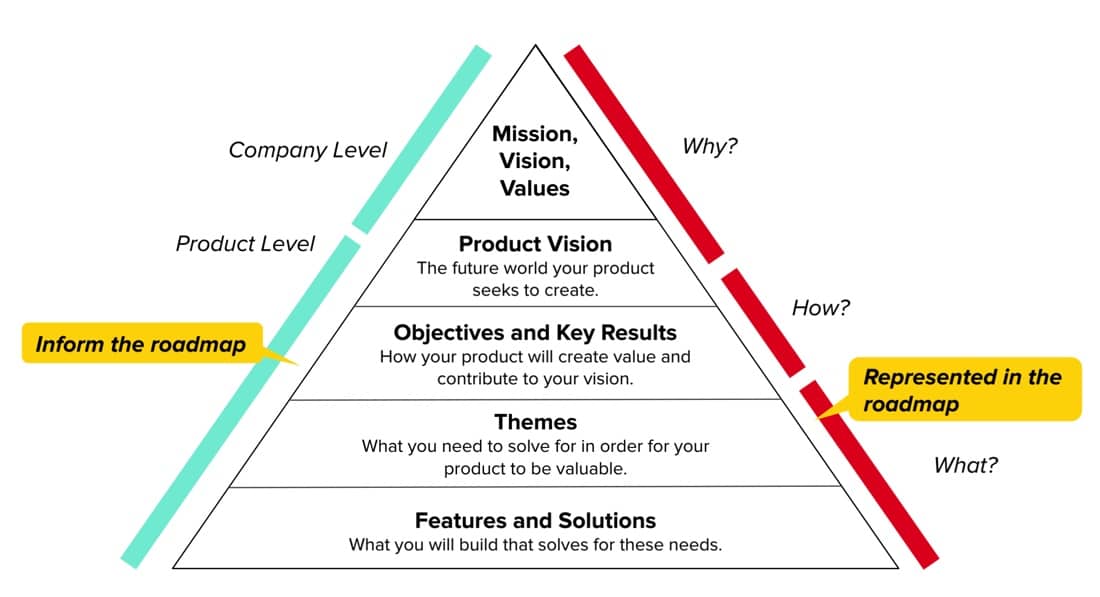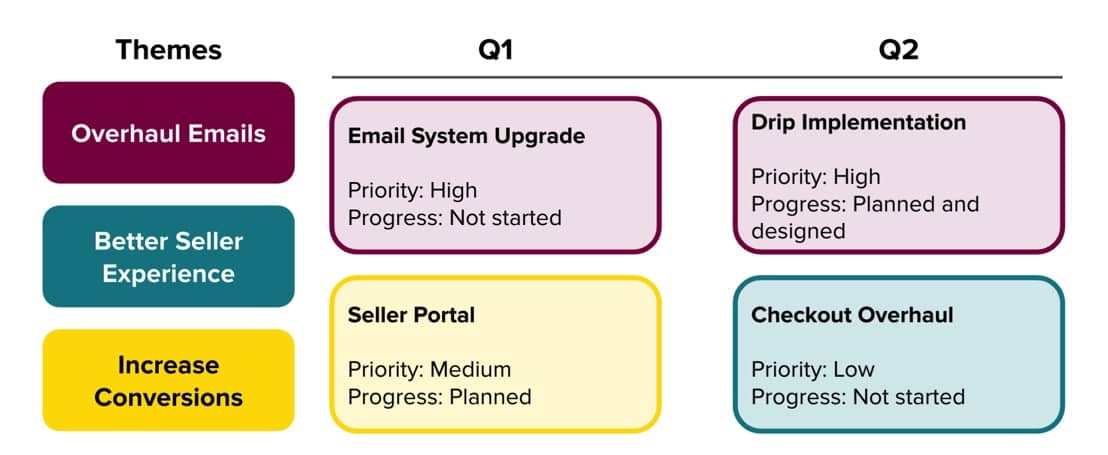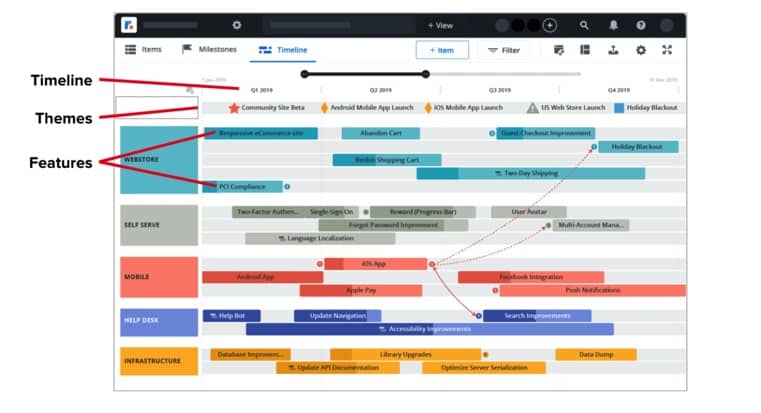What is a product roadmap?
In simplest words, a product roadmap is a plan of action for how a product or solution will evolve over time. It’s used to outline future product functionality and when new features will be released. It not only provides crucial context for the team's everyday work, but also ensures that the work is aligned towards the higher level business strategy.
Key point to remember is that it is not a project management tool that defines tasks, deadlines, and goals. It’s pretty much like an actual map that you would use to navigate your way to your destination (or, in this case, goals). It’s an action-based document that plans out the steps you'll need to take to execute a strategy.

How to build a product roadmap?
A product roadmap is a living, breathing document and should be updated frequently. The process of building it is iterative and ongoing, and mainly include:
- Gathering feedback from stakeholders, clients, and customers.
- Prioritizing and ranking the needs based on importance, client, and revenue impact.
- Begin to define and implement strategic roadmap initiatives.
- Measure the success of each initiative.
- Reprioritize as necessary.
Here’s what you should be looking at when creating the roadmap (inputs), and here’s what you should be fleshing out based on that data (outputs).
Roadmap Inputs:
- User research
- Customer feedback
- Company priorities and OKRs
- Technology capabilities
- Team capacity and skills
- Competitive insights
- Analytics and metrics
Roadmap Outputs:
- Themes - High-level feature areas used to organize work.
- Features - Small, measurable, stack-ranked projects.
- Timeline - An estimate of when (and in what order) work will be completed.


How to get the most out of your Product roadmap?
-
Focus more on themes, not features
Themes should ideally be customer-centered and by focusing more on them, the teams can clearly chalk out the tactical details that's needed in your product development. Themes are like strategic guideposts for the team during development. -
It should be maintained
A roadmap is a living, breathing guide. It should always be changing based on resources available, company priorities, and market conditions. It’s inevitable and expected that customer needs and preferences will change and evolve. Ideally, you’d want the roadmap development process to be a cycle that feeds into itself. -
Regular collaboration with stakeholders
Product development is all about maximizing stakeholder relationships. By gaining the perspective of external and internal stakeholders, developers, the sales team, customer support, and engineers, you get a holistic view of the customer experience. It helps increase their sense of ownership over the customer problems and helps determine what should be done when. -
Developing and grooming your product backlog
Until you translate your roadmap’s ideas and strategies into the specific tasks, features, and other details (the backlog) your roadmap won’t be of much help to drive your product’s actual development, because you will not be able to tell your team specifically what to work on next. So, equally important to your roadmap is an organized and intelligently product backlog to help keep your development team focused on the right tasks at the right time.
Conclusion
In conclusion, a product roadmap needs to communicate your strategy and should be created in such a way that it lays out a high-level execution plan for a product’s successful development. Make sure you deeply understand customers’ needs and how they think about your product. Listen to your team, be open to hearing multiple opinions. But also be objective and mission-driven with your plan. Get the full story before you make decisions.